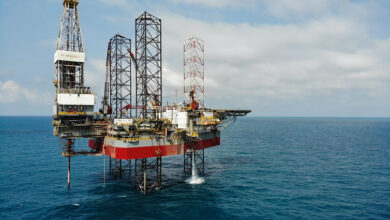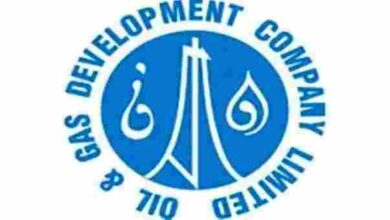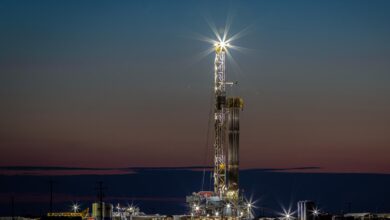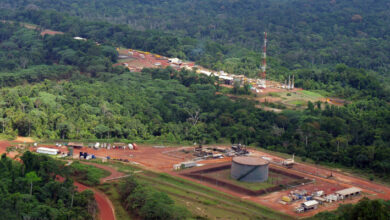Industry investment and regulatory support needed to tap full potential of Vaca Muerta, Brazilian pre-salt gas
By Stephen Whitfield, Associate Editor
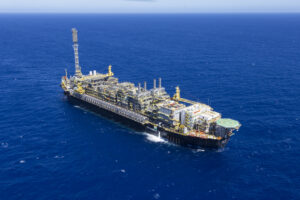
South America has huge potential associated with huge volumes of natural gas – particularly in Argentina’s Vaca Muerta shale and Brazil’s pre-salt offshore basins – but so far much of that potential remains untapped. Unlocking these resources fully will require improvements in regulations, market economics and infrastructure, according to panelists at a CERAWeek session on 3 March.
Additional investment, from both governments and industry, was also cited as a key component for success. The speakers – representing Pan American Energy Group, a prominent producer in the Vaca Muerta; Total; and Enauta, a private E&P company based in Brazil – also emphasized the need for Argentinian and Brazilian gas to be competitive outside of local markets.
Argentina’s government has been focusing more attention on stimulating natural gas production in the Vaca Muerta in recent years, following steady production declines. Late last year, the government launched a program called Plan Gas 4 to incentivize growth in local gas production. Under the plan, 23 contracts were awarded to various companies, allowing them to sell 67.4 million cu m/day of natural gas to the market at a combined weighted average of $3.54/MMBtu through 2024.
Technology and operational improvements are also expected to help boost gas production in the coming years. Average completion speed in the Vaca Muerta has already more than doubled since 2016, according to Rystad Energy. In Q2/Q3 2020, operators averaged approximately 900 ft/day and 2.3 million lbs/day of frac sand pumped. Rystad attributed these efficiency gains to the adoption of more efficient fracking practices, versus the legacy single-frac approach.

While better government-supported pricing and technical efficiency are both positive developments, these factors are likely not enough to stimulate gas production at the desired pace or magnitude. Marcos Bulgheroni, Group CEO of the Pan American Energy Group, cited access to new gas markets – beyond those nearby in South America – as a critical piece of the puzzle that’s missing.
“When you look at this kind of massive reserve, you find that the domestic market from neighboring countries may not be enough to satisfy the kind of development you want to have,” Mr Bulgheroni said. “You need to develop the international market. If you’re doing that, that means you’re developing your gas for the Asian market. And if you’re competing in Asia, that means you have to compete with the US. At that point, you have a reference price for which Vaca Muerta, by definition, has to be competitive – let’s say that’s a Henry Hub price of $2.50 to $3.00. That’s a level of competitiveness that I believe Vaca Muerta can reach, given the fact that we’re not far from there already.”
For natural gas resources from the Brazilian pre-salt, unfortunately, that price level is likely not a range where it can be competitive, said Phillipe Blanchard, President of E&P, Brazil, at Total.
“Today, if you look at Brazil, you can get gas from Bolivia that is quite competitive. Almost all of the installations in Bolivia have been amortized, so you can get gas at a very good price,” he said. “With Bolivian LNG, that gas will be setting the price. Pre-salt gas will need to be competitive with Bolivian LNG.”
The main hurdle, Mr Blanchard added, will be reducing the costs associated with bringing pre-salt gas back to shore and processing it. Taking advantage of existing infrastructure and adding additional transportation capacity are key factors.
Currently, Brazil has two pipelines, Route 1 and Route 2, that bring domestic gas to shore for further processing and distribution. The Route 3 pipeline, which will connect the Santos Basin to the city of Itaboraí, near Rio de Janeiro, is scheduled to start operations in 2022. It will add approximately 18 million cu m/day of capacity, or a 40% increase, according to the Brazilian Energy Research Office. “With the addition of the offshore route, we’ll be able to reduce the costs,” Mr Blanchard said.
A Route 4 pipeline to boost capacity by an additional 15 million cu m/day has been proposed but not approved.
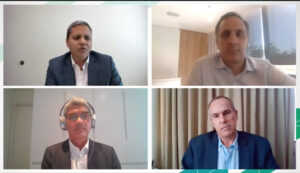
Décio Oddone, CEO of Enauta, asserted that regulatory support will be key to the development of Brazil’s gas market. “I think we are at an inflection point in terms of the technical aspects. We know where the sweet spots are,” he said. “We have had many years of investing and understanding what are the best drilling and fracking techniques. From a technical point of view, I think we can get there. Now, the regulatory environment is key.”
Mr Oddone, who previously served as Director-General of Brazil’s National Agency of Petroleum, Natural Gas and Biofuels (ANP), said he believes significant improvements have been made, but additional work remains to be done.
“While the Petrobras monopoly was formally extinguished in 1997, in the Brazilian natural gas sector, Petrobras’ dominance has continued until basically now,” Mr Oddone said. “On the regulatory side, the ANP and the Anti-Trust Regulatory Agency have taken some measures to start changing that, and we have seen a lot of progress since then, but we still need to confirm the opening of the natural gas market.”
On 17 March – two weeks after this CERAWeek panel – the Brazilian government passed a law to allow third-party access to natural gas pipelines, gas treatment facilities and regasification terminals. These facilities had long been dominated by Petrobras. Under the new law, companies interested in building gas pipelines will only need a simple authorization, as opposed to the more complex concession contracts they previously needed. The law also gives ANP more power to foster competition and reduce market concentration. DC

